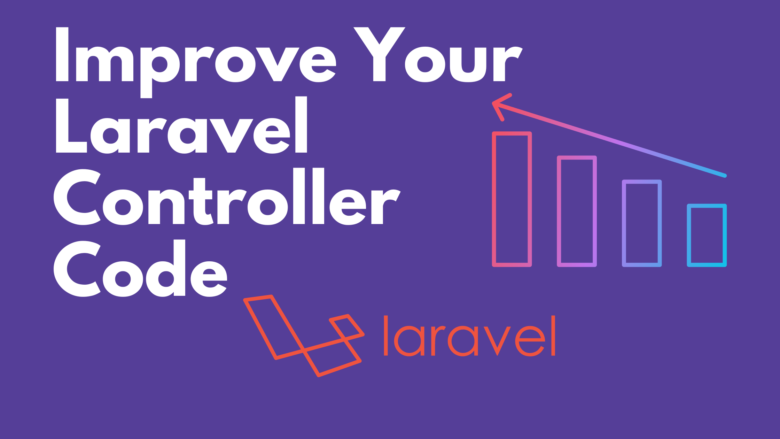Laravel, a powerful PHP framework, has gained immense popularity due to its elegant syntax and comprehensive features. Among its core components, controllers play a pivotal role in managing the application’s logic. However, as projects evolve, controller code can become cluttered and convoluted. In this article, we’ll delve into the best practices for cleaning up your Laravel controller code, along with practical examples to illustrate each concept.
- Single Responsibility Principle (SRP)
The Single Responsibility Principle suggests that a controller should have only one reason to change. This means it should handle a specific set of related actions. By adhering to SRP, you maintain cleaner and more maintainable code.
class UserController extends Controller
{
public function index()
{
// Fetch and display all users
}
public function store(Request $request)
{
// Store a new user
}
}
- Thin Controllers, Fat Models
Follow the principle of having thin controllers and fat models. Complex business logic should reside within the model classes, keeping your controllers lean and focused on handling HTTP requests.
class UserController extends Controller
{
public function show(User $user)
{
return view('users.show', compact('user'));
}
public function update(StorePostRequest $request, User $user)
{
$user->updateProfile($request->all());
return redirect()->route('users.show', $user);
}
}
class User extends Model
{
public function updateProfile(array $data)
{
// Process and update user profile
}
}
- Request Validation
Request validation is a pivotal step in maintaining data integrity and security. Laravel provides a built-in validation system that, when combined with custom Request classes, allows you to encapsulate validation logic, keeping your controllers clean.
class StorePostRequest extends Request
{
public function authorize()
{
return true; // Can add authorization logic here
}
public function rules()
{
return [
'title' => 'required|string|max:255',
'content' => 'required|string',
];
}
}
class PostController extends Controller
{
public function store(StorePostRequest $request)
{
// Validation passed, continue processing
}
}
- Route Model Binding
Leverage Laravel’s route model binding feature to automatically inject model instances into your controller methods. This enhances readability and reduces the need for repetitive code.
Route::get('/users/{user}', 'UserController@show');
- Dependency Injection
Utilize dependency injection to inject required services and repositories directly into your controller methods. This enhances testability and reduces the coupling between components.
class UserController extends Controller
{
protected $userService;
public function __construct(UserService $userService)
{
$this->userService = $userService;
}
public function index()
{
$users = $this->userService->getAllUsers();
return view('users.index', compact('users'));
}
}
- Utilize Middleware
Middleware can help you extract repetitive pre- and post-processing logic from your controller methods. This leads to cleaner, more focused code.
class UserController extends Controller
{
public function __construct()
{
$this->middleware('auth')->except(['index', 'show']);
}
// Controller methods
}
- Authorization
Authorization ensures that users have the necessary permissions to perform certain actions. By utilizing Laravel’s Gate or Policy system within custom Request classes, you can centralize your authorization logic, resulting in more readable controllers.
class DeletePostRequest extends Request
{
public function authorize()
{
return Gate::allows('delete', $this->post);
}
// No validation rules needed for authorization-only requests
}
class PostController extends Controller
{
public function destroy(DeletePostRequest $request, Post $post)
{
// Authorization passed, delete the post
}
}
Form Requests for Complex Validation
For more complex scenarios, Laravel’s Form Request classes offer a powerful solution. These classes combine validation and authorization logic into a single unit, leading to cleaner and more concise controllers.
class UpdateProfileRequest extends FormRequest
{
public function authorize()
{
return $this->user()->id === $this->route('user');
}
public function rules()
{
return [
'name' => 'required|string|max:255',
'email' => 'required|email|unique:users,email,' . $this->route('user'),
];
}
}
class ProfileController extends Controller
{
public function update(UpdateProfileRequest $request, User $user)
{
// Validation and authorization passed, update the profile
}
}
Conclusion
Cleaning up your Laravel controller code is essential for maintaining a scalable and maintainable application. By following principles like the Single Responsibility Principle, prioritizing thin controllers and fat models, and utilizing features such as route model binding and dependency injection, you can ensure your controller code remains organized and efficient. Implementing these practices not only improves code quality but also enhances collaboration among developers and simplifies debugging and testing processes.




